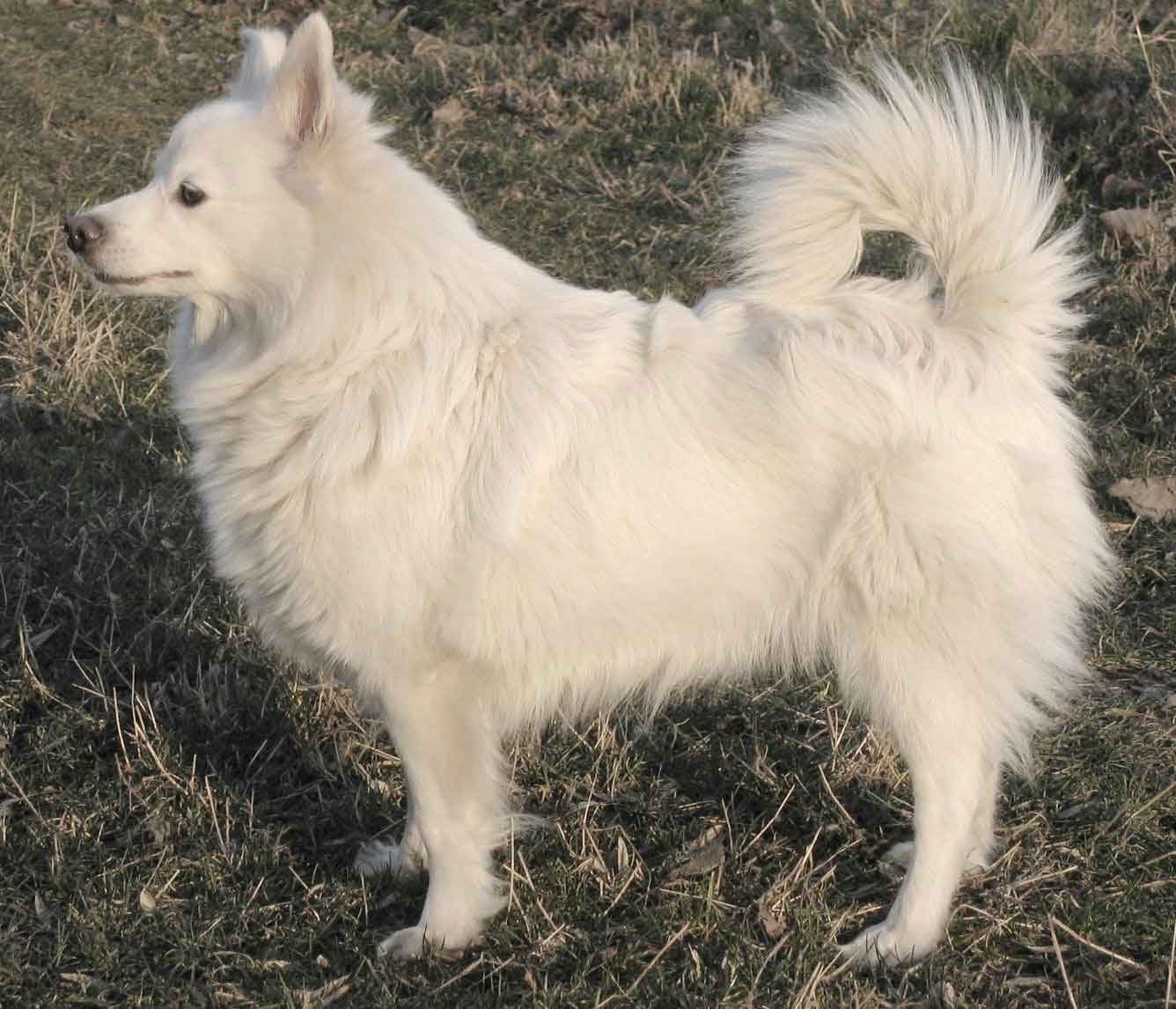Content |
|---|
History
While the small and medium varieties of the German Spitz (Pomeranian, Kleinspitz (Miniature or Small Spitz) and Mittelspitz (Standard or Medium Spitz), Keeshond) were more common among common people in the Middle Ages, the Grossespitz (Giant or Large Spitz) , with its impressive and elegant shape, found its way into the homes of the noble and middle classes. The Grossespitz (Giant or Large Spitz) white enjoyed great popularity even among representatives of the English nobility. The “German Spitz” He was also able to make a name for himself in America and was kept mainly by German immigrants. In the course of the negative image of Germany after the 1st World War, the Grossespitz (Giant or Large Spitz) was renamed as “American Eskimo”
The Grossespitz (Giant or Large Spitz) black, on the other hand, used to be more common in the vineyards of Baden Württemberg. His excellent wakefulness instinct was a great help to the winegrowers in keeping off the grape thieves, both animals and humans, away from the valuable vines.
According to Gesellschaft zur Erhaltung alter und gefährdeter Haustierrassen e. V. (Society for the Conservation of Ancient and Endangered Breeds of Domestic Animals), to the Grossespitz (Giant or Large Spitz) Today it is considered endangered. Over the years 2000 to 2002, for example, there was only 11 Grossespitz (Giant or Large Spitz) blacks in Germany and 38 white dogs. To preserve this breed of enterprising and cheerful dogs, there are initiatives to mate the Grossespitz (Giant or Large Spitz) whites and blacks among themselves and to cross them with the Mittelspitz (Standard or Medium Spitz) and the Keeshond.
Physical characteristics
The Grossespitz (Giant or Large Spitz) is characterized by its special double layer. The long straight top layer looks very bushy due to the thick, padded undercoat and stays away from the body. Particularly striking is the strong horsehair fur collar and the bushy tail that curls over the back. The fox head with the agile eyes and the pointed ears, small and narrow give this Spitz its characteristic appearance.
With a shoulder height of up to 50 cm and a weight of 15-20 kg, the Grossespitz (Giant or Large Spitz) is the second largest representative of the German Spitz after the Keeshond. It breeds in the colors black, White and Brown.
The males and females of the category “Grossespitz (Giant or Large Spitz) ” they are very similar in weight and size. But, the male representatives of the breed mostly appear heavier and larger. This is due to the fact that their coat is slightly longer and therefore appears more voluminous than that of female dogs..
Character and skills
The Grossespitz (Giant or Large Spitz) needs a lot of movement and exercise. So, long walks and running games and slides should always be on the agenda. It also, dog sports such as agility, obedience or tracking can bring additional variety to the dog's life and make optimal use of the breed.
Breed-specific character traits
The Grossespitz (Giant or Large Spitz) He is very affectionate by nature and would like to accompany his family everywhere.. Staying home alone does not suit them at all and can make dogs experience their grief intensely. As a rule, the more attention and affection a Grossespitz (Giant or Large Spitz) , more comfortable feels. That's why they like to be with the family, since they also get along very well with children. But, of course, every four legged friend, no matter how sociable I am, he also needs his rest. It is important that all members of the family respect these phases, which are usually quite rare with the Grossespitz (Giant or Large Spitz) . Thanks to his kind and loving character, many representatives of this breed of dog are also suitable as therapy dogs.
Although I do not necessarily suspect it at first glance, the Grossespitz (Giant or Large Spitz) it is also extremely robust and weather resistant. Due to its distinctive protective instinct, they are also considered ideal guardians for the house and yard. But, without proper training, can become a very barking dog. Through an appropriate workload for each species, good socialization and a consistent but loving upbringing, desirable behavior can be encouraged, that is to say, “don't bark”.
Grossespitz training
Get enough attention and feel well integrated into family life. As they have almost no hunting instinct, they are usually relatively easy to train and can be recommended for beginners. But, it is important to inform yourself widely about the breed and its requirements beforehand.
Like all the other spitz, to the Grossespitz (Giant or Large Spitz) likes to be in contact with children and loves to play with and protect them. So, fits well in a lively little family, in which there is always something to do and much to discover.
So that the Grossespitz (Giant or Large Spitz) can exercise your favorite activity as a watchdog, The ideal would be to keep it in a house with a patio and garden. If the four-legged friend moves regularly and has mental problems, you can also consider keeping it in a city apartment, as long as there are enough opportunities for exercise nearby.
Videos of the Greater Spitz
Type and recognitions:
- FCI CLASSIFICATION: 97
- Group 5: Spitz and primitive types
- Section 4: European Spitz. Without working trial..
